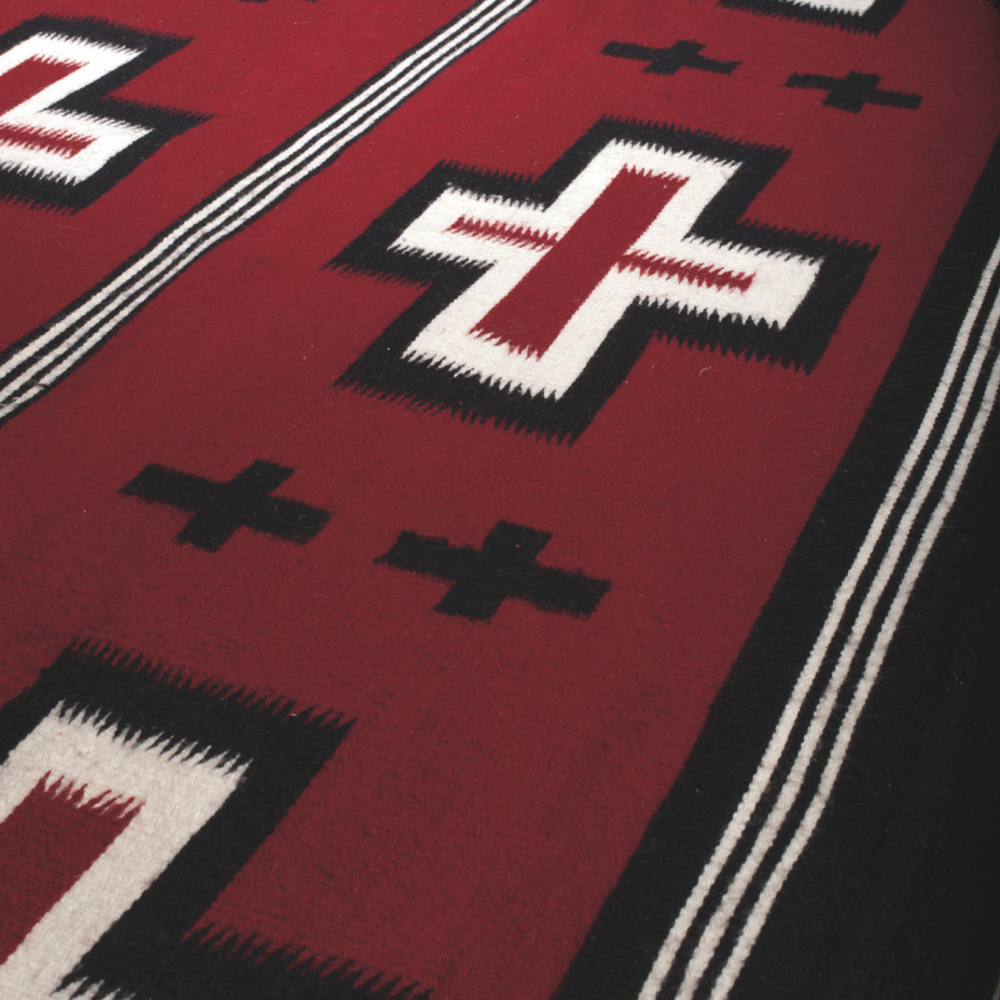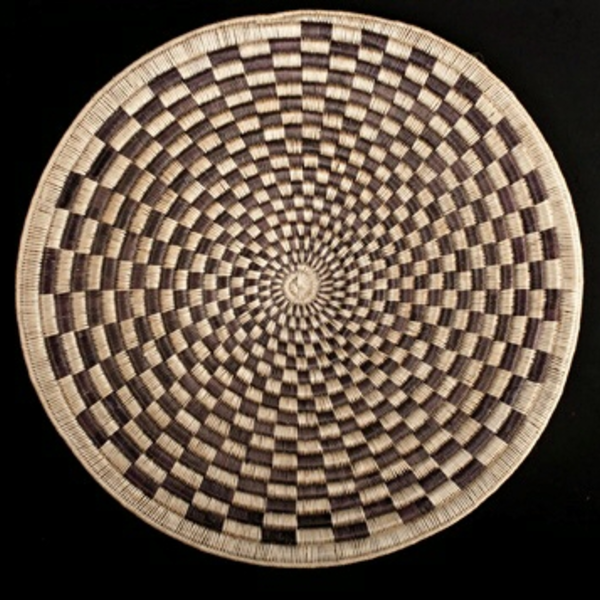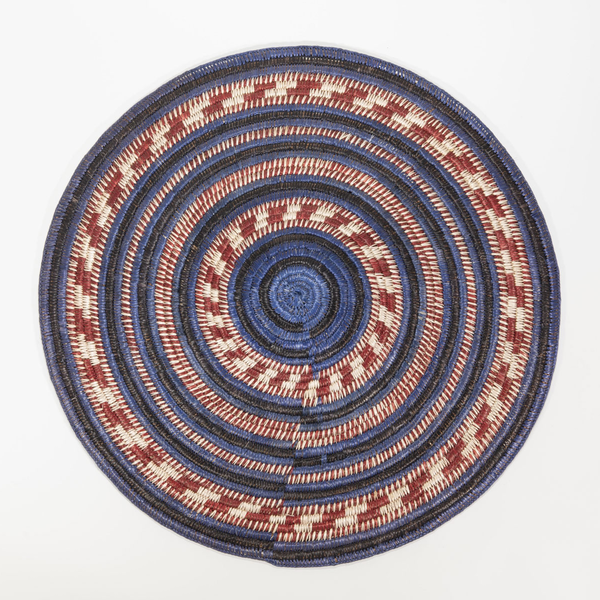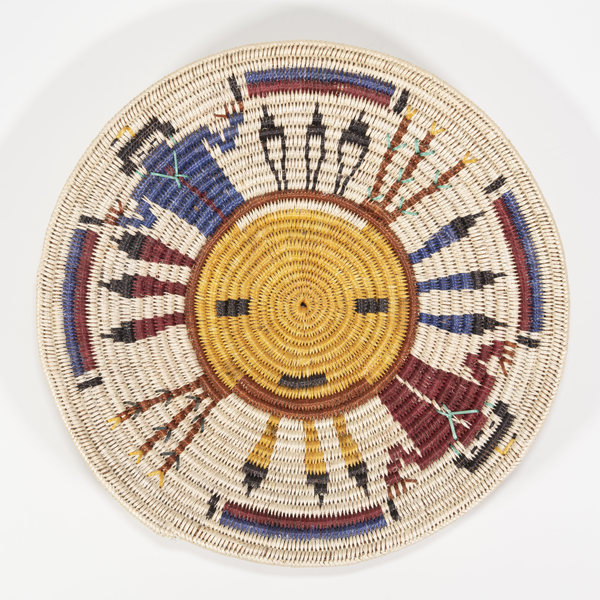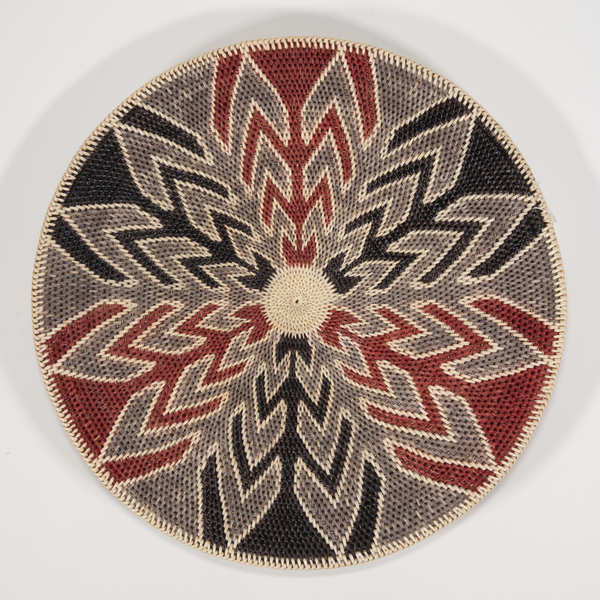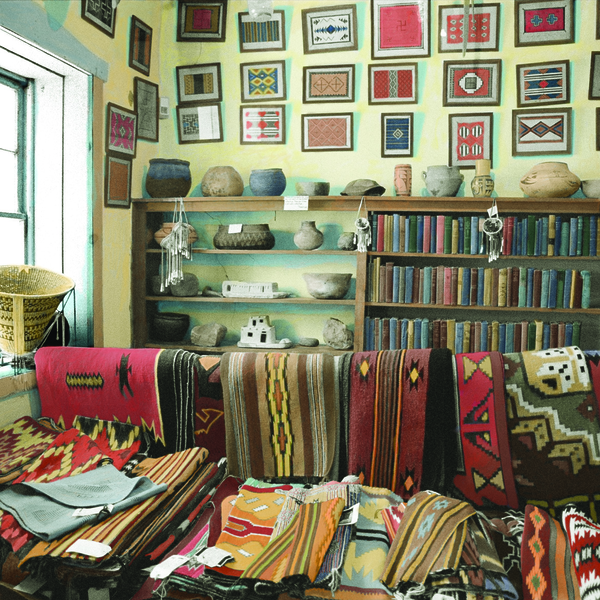Navajo Rugs
The Diné (Navajo) have a long history of loom weaving. Diné weavers created blankets, finely woven in red, black, grey, white, and blue, to wear for warmth and status. Ute and Plains Indians collected these prized weavings. The arrival of railways in the Southwest brought changes to weaving. Commercial wool became available in a rainbow of dyed colors and inexpensive blankets from outside shifted market demand. In response, Diné weavers began weaving rugs instead of blankets. In collaboration with traders in the region, they began to serve a growing tourist audience with a wildly expanding array of woven geometric designs. In the early 1900s, Hosteen Klah—a renowned Diné medicine man and expert weaver—started incorporating sacred imagery into his work, like Ye’ii (Holy People) from ceremonial sand paintings. Initially controversial, Klah’s work became an inspiration for pictorial rugs and the baskets of modern Diné weavers.
